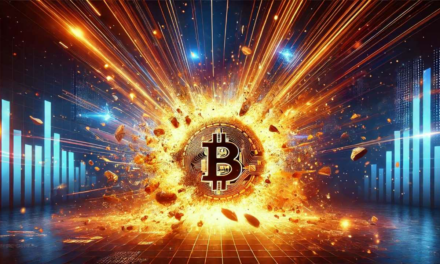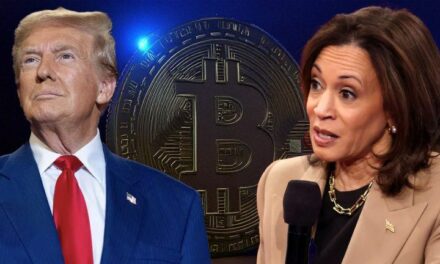Introduction
I would like to express my deep appreciation for the support and advice I received from two experts at BingX, J and L, whose contributions have been crucial. While I cannot name them for confidentiality reasons, their help has been invaluable. After evaluating many CEX exchanges, I chose BingX because I believe that proper selection is more important than effort. Please note that this article does not offer financial advice. We all know that, so I’ll skip the legalities and get to the heart of the matter—selection is far more important than effort.
Trading is all about decision-making: what to invest in, when to buy, and when to sell. It’s a continuous process of choices. The biggest distinction between crypto and traditional stocks is that the pace of decision-making in crypto is much faster.
The consequences of your decisions vary greatly with market conditions. For instance, when the market is uncertain, the safest choice is often to avoid losses. But most people, particularly 99% of office workers, keep trading, hoping for profits. If market conditions don’t support profitability, opposing the market leads to inevitable losses.
The secret to reaching $1 million lies in making fast and accurate decisions—your ability to choose correctly is key.
1. Selection Over Effort: The First Step to $1 Million – Picking the Right Coin
In crypto spot trading, you essentially deal with three categories: 1. Bitcoin, 2. Altcoins, and 3. Meme coins.
The right choice of coin is crucial. Many traders fall victim to certain misconceptions that lead to consistent losses:
- They hope to get rich overnight, perceive Bitcoin’s growth as slow, and switch to altcoins. When altcoins don’t give the expected returns, they move to meme coins, which are even more volatile. Ultimately, they trade a mix of assets and lose everything.
- An influencer claims they made millions from meme coins, prompting others to follow suit—resulting in significant losses.
Statistics show that more than 80% of traders in the crypto space lose money due to poor coin selection.
The risks associated with Bitcoin, altcoins, and meme coins differ: Bitcoin < Altcoins < Meme Coins. These risk levels are inherent. Investors must first evaluate their own risk tolerance before selecting a coin—understanding your own limits is essential.
1.1 Understanding Your Risk Tolerance
If you have a low tolerance for risk, you may feel extremely uncomfortable and even anxious during volatile periods. If you exceed your risk threshold, you may end up making impulsive decisions and suffering losses.
Can you trade outside your risk tolerance? Yes, but only if you believe there is a high probability of success (greater than 60%).
Once you make a decision, there’s no turning back. You must be ready to lose your entire investment if the market goes against you. For example, if your risk tolerance is $1,000, and you invest in high-risk meme coins, you must be prepared to lose that $1,000.
Many traders expect to turn small amounts, like $1,000, into huge profits, but fail to handle the risk of complete loss. If you are ready for the worst-case scenario, be aware that borrowing funds to continue trading is common.
The main reason traders borrow money isn’t because they lost all their capital but because they want to leverage the profits they previously made.
1.2 Choosing the Right Path: Bitcoin < Altcoins < Meme Coins
The risk levels for Bitcoin, altcoins, and meme coins vary depending on the information you can access. So, where can you find reliable information?
- If you have connections with hedge fund managers and top financial figures, trading altcoins could be very profitable for you.
- If you have close relationships with influencers, celebrities, or even someone like Elon Musk, trading meme coins might work well. Note: These should be real, personal connections—not just social media follows.
Why is having the right connections important? It allows you to get insider information before others do.
If, like me, you don’t have those connections, the best strategy is to allocate 80% of your capital to Bitcoin and rely on independent research.
I find Binance Plaza inefficient for my needs—it’s filled with noise that detracts from valuable information. Instead, I prefer to quickly analyze the Bitcoin price on BingX to catch up on the latest market trends.
This is about making the right moves with the available data, not wasting time.
2. Selection Over Effort: The Second Step to $1 Million – Timing
While many believe Bitcoin follows a strict four-year cycle, this is a myth. The likelihood of perfectly timing market cycles is only 0.06%.
So, why does Bitcoin seem to follow this pattern? It’s not just about mining halving—it’s about liquidity, or “hot money.”
Every four years, the U.S. election injects liquidity into the market, temporarily inflating asset values to appease voters, creating predictable cycles of growth and decline.
The real timing secret is understanding when liquidity enters or exits the market—that’s the core of investing.
2.1 The Role of Liquidity in Market Timing
Since markets are driven by human behavior, it’s difficult to predict individual actions. The best method is to observe hot money.
Meme coins often experience massive surges because they act like balloons, rapidly inflating when liquidity flows in. However, every financial crisis has occurred when a balloon burst due to too much liquidity.
Knowing when these “balloons” will burst or expand is the key to good timing. I prefer using platforms like BingX, which conduct thorough research on the coins they list, saving me time.
Even well-researched altcoins can still collapse. That’s why good position management is essential, such as limiting exposure to new coins and using automated buy/sell orders.
3. Selection Over Effort: The Third Step to $1 Million – Position Sizing
Position sizing is a crucial part of successful trading—it’s how you manage your capital.
Many traders lose money because their actions contradict their strategies. For example, an investor with a $1,000 risk tolerance may decide to put everything into high-risk meme coins, essentially gambling.
Proper position sizing is about determining how much you can afford to lose. If you can handle 100 losses, then you should only risk $10 per trade.
Since predicting short-term market movements is challenging, Copy Trading is an excellent way to mitigate risk. After testing different platforms, I returned to BingX because of its superior Copy Trading features.
Top 5 Exchanges
1. Coinbase: Fast bank transfers, but high transaction fees.
2. Binance: Struggling with regulatory issues, losing traction.
3. Bybit: Strong in contract trading but lacks long-term growth.
4. OKX: Large volume but lacks a unique value proposition.
5. BingX: Ideal for coin selection and market timing.





